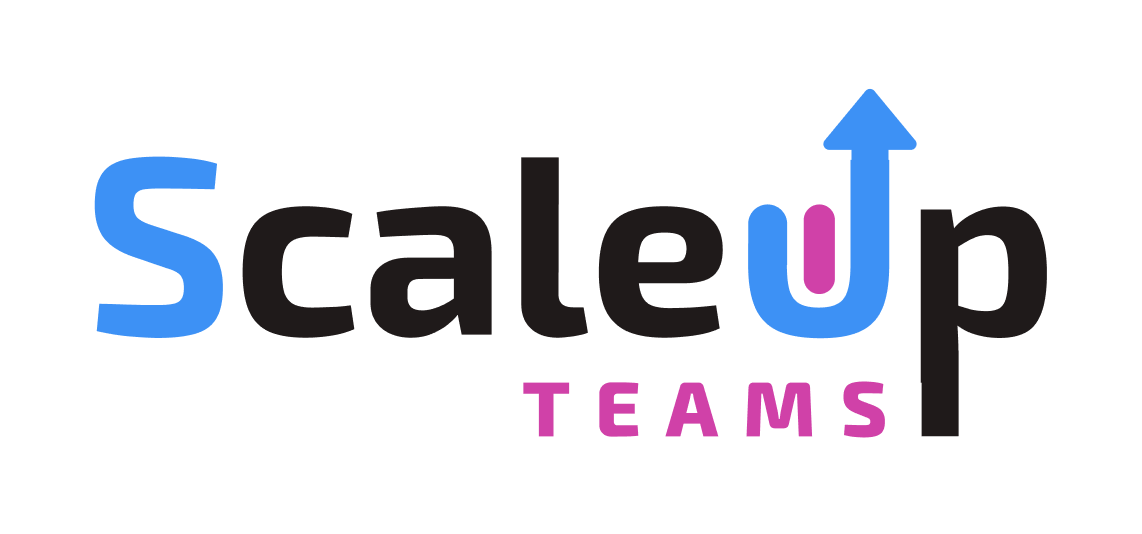Choosing between a virtual assistant and an AI agent comes down to risk, judgement, and accountability. Use AI for low-risk, repeatable tasks with clean inputs. Choose a VA when work touches customers, brand, revenue, or compliance, and when someone needs to own the outcome.
This guide gives you a clear, practical comparison up front, followed by quick take-aways and a simple decision path. We show where AI is sufficient, where hiring a virtual assistant is the safer and more effective choice, and how a VA-led hybrid works in practice.
At a glance
| Option | Best for | Risk tolerance | Ownership & accountability | Setup & maintenance | Review needed | Typical cost pattern |
| AI agent | High-volume, repeatable tasks with structured inputs | Low | Limited. Executes steps, no true stewardship | Prompting, tool wiring, ongoing tuning | Yes. Human QA for quality and brand | Lower per task, hidden costs in upkeep |
| Virtual assistant (VA) | Multi-step work that touches customers, brand, revenue or compliance | Medium to high | Strong. A named person owns outcomes and improvements | Role design, onboarding, SOPs | Light. Sampling and checkpoints | Stable monthly with compounding value |
| Hybrid (VA-led) | Mixed workflows with both scale and judgement needs | Medium | Strong. VA orchestrates tools, manages exceptions | Moderate. VA maintains prompts and playbooks | Targeted QA at risk points | Efficient blend of time and quality |
Quick takeaways
- Use AI agents for narrow, repeatable tasks that a human will review.
- Hire a VA when judgement, brand protection, stakeholder coordination or escalation is required.
- A VA-led hybrid works well. Automate safe steps, keep a human responsible for quality and edge cases.
- Start with one workflow, set acceptance criteria, measure error rate and cycle time, then scale.
Understanding the roles
AI agents run predefined steps across tools. They are effective with consistent inputs and clear rules. They struggle when instructions change, when data is messy, or when people and context matter.
Virtual assistants learn your business, own outcomes, and improve the process. They coordinate across teams and tools, handle exceptions, and protect tone, privacy, and compliance.
What is a virtual assistant
A virtual assistant is a dedicated human specialist who supports your business remotely. They learn your goals and tools, coordinate with stakeholders, and take ownership of multi step workflows. VAs handle exceptions, protect brand tone and privacy, document processes, and continuously improve outcomes across operations, marketing, support and administration.
What is an AI agent
An AI agent is software that follows prompts, rules, and tool access to complete predefined tasks. It performs best with clean, consistent inputs and clear success criteria. AI agents are fast at scale, but struggle with ambiguity, messy data, changing instructions, and relationship management, so human review is usually required.
Key differences at a glance
- Core strength: VA shows judgement, coordination, and ownership. AI agent delivers speed at scale under clear rules.
- Inputs: VA handles messy, variable inputs. AI agent needs structured, consistent inputs.
- Exceptions: VA resolves edge cases and escalates. AI agent stalls or produces errors.
- Accountability: VA is a named person who owns outcomes. AI agent executes steps without stewardship.
- Brand and communication: VA protects tone, nuance, and context. AI agent risks off-brand or tone-deaf output without thorough prompting and instructions.
- Setup and maintenance: VA uses role design and SOPs that improve over time. AI agent needs prompt tuning, tool wiring, and ongoing oversight.
- Data and privacy: VA applies policy and judgement. AI agent follows rules and may miss red flags.
- Review requirement: VA needs light sampling and checkpoints. AI agent requires human QA.
- Best fit: VA suits customer-facing or revenue and risk-linked workflows. AI agent suits low-risk, repeatable tasks.
- Cost pattern: VA is stable monthly with compounding value. AI agent is low per task with hidden upkeep.
Key differences that matter
Quality and brand safety
Agents generate outputs quickly but can miss nuance or produce confident errors. VAs write in your voice, spot risks, and know when to ask before sending. When reputation is on the line, a VA reduces rework and protects trust.
Exceptions and edge cases
Agents follow patterns. When inputs break the pattern, they stall. VAs adapt, clarify, and move work forward. This is crucial in support, finance admin, and client-facing tasks where one unusual request can derail a workflow.
Accountability and outcomes
Agents complete steps. VAs own outcomes. A VA will chase dependencies, align stakeholders, and close the loop. That difference shows up in delivered results, not just activity logs.
Orchestration across tools
Agents perform well inside one app or a tidy chain. VAs bridge gaps between CRM, ads, analytics, finance, and ops, then document the path so it is repeatable and auditable.
Data, privacy, and compliance
Agents do not understand duty of care. VAs apply policy, handle PII carefully, and escalate when something looks off. Principle-of-least-privilege access and simple audit trails keep you in control.
Continuous improvement
Agents need prompting and maintenance. VAs turn recurring work into SOPs, checklists, and dashboards. Over time, cycle times drop and error rates fall.
Why virtual assistants are usually the better choice than AI agents
Short answer: for most teams, a dedicated virtual assistant is the safer and more effective starting point. A VA brings judgement, ownership and continuity. An AI agent brings speed at scale when inputs are clean. If the work touches customers, brand, revenue or compliance, a VA delivers better outcomes with lower risk.
Why VAs win in practice
- Ownership and accountability: a named person responsible for results and follow-through.
- Exceptions and ambiguity: adapts to changing instructions and messy data.
- Brand and compliance: protects tone and privacy, escalates risks early.
- Cross-tool coordination: bridges gaps, chases dependencies, documents the process.
- Total cost over time: fewer breakages and less rework as improvements compound.
- Speed to value: onboarding a VA typically produces outcomes sooner than designing and maintaining an agent stack.
Hiring VA vs AI Agents for Executives
Executives operate with confidential material, shifting priorities and multi-stakeholder decisions. A virtual assistant is preferable to an AI agent because a VA triages with context, drafts and sends in the approved tone, manages stakeholders and escalates sensibly so actions close on time. An AI agent can draft or summarise, but it cannot read nuance or take accountable ownership.
- Choose a VA when: board or investor packs, VIP client comms, shifting cross-team priorities, sensitive travel and logistics.
- Use AI for: transcript clean-ups, first-draft briefs, meeting summaries you will review.
- Measure: hours recovered per week, action closure rate, on-time materials, error rate in external comms.
- First steps: set inbox triage rules and escalation paths, provide tone guide, delegate follow-ups, review a weekly outcomes report.
Hiring VA vs AI Agents for Entrepreneurs
Entrepreneurs need revenue momentum across sales, marketing and basic finance where negotiation and follow-through decide outcomes. A virtual assistant outperforms an AI agent by qualifying and nurturing leads, handling supplier queries, converting quotes to invoices and keeping brand voice consistent. An AI agent helps with first-draft copy and lists, but stalls on objections and edge cases that determine deals.
- Choose a VA when: multi-step quote-to-cash, supplier negotiations, prospect nurturing, brand-sensitive outreach.
- Use AI for: first-draft emails and captions, research lists, spreadsheet tidy-ups.
- Measure: booked calls, quote-to-cash time, overdue invoices, content shipped per week, CRM hygiene.
- First steps: map your pipeline, assign the VA ownership of follow-ups, set daily send targets and weekly reporting.
Hiring VA vs AI Agents for Startups
Startups change direction frequently and rely on cross-functional cadence more than raw drafting speed. A virtual assistant is the better choice because a VA runs interview ops, compiles release notes, coordinates product-growth hand-offs and maintains investor hygiene, holding context between moving parts. An AI agent can cluster feedback and draft notes, yet cannot own sequencing or dependencies.
- Choose a VA when: user-interview scheduling, beta feedback handling, release-note compilation, cross-team sprint admin, investor packs.
- Use AI for: clustering feedback, drafting notes, tidying transcripts before human review.
- Measure: sprint admin time saved, experiment throughput, interview completion rate, investor update timeliness.
- First steps: define sprint hygiene tasks, hand over interview ops and notes, template release notes, set a weekly ops checkpoint.
Hiring VA vs AI Agents for SMEs
SMEs live and die by operational reliability—orders, billing and service recovery—often in imperfect, legacy systems. A virtual assistant is superior to an AI agent for resolving exceptions, chasing receivables, de-escalating issues and tightening SOPs. An AI agent can automate FAQs and routine entry, but is brittle with inconsistent data and cannot handle emotional service moments.
- Choose a VA when: orders with exceptions, billing and receivables follow-up, service recovery, legacy systems, seasonal demand.
- Use AI for: FAQ deflection, routine data entry, invoice OCR, templated replies before human send.
- Measure: order accuracy, response and resolution time, days sales outstanding, repeat-customer rate, review scores.
- First steps: document order-to-cash and support flows, define SLAs, delegate inbox/orders/billing, review weekly improvements and SOP fixes.
How do I know if a VA or an AI agent is right for me?
- Map the workflow
List each step. Highlight any step that touches customers, brand, money, or regulated data. - Assess risk and variability
If steps are low-risk and consistent, an AI agent can lead (with human review). If steps are higher-risk or frequently variable, a VA should own them. - Select the operating model
Choose AI, VA, or a VA-led hybrid where the VA owns quality and exceptions while AI handles repeatable sub-tasks. - Set acceptance criteria
Define quality checks, timing targets, and clear escalation rules before work starts.
Helping you decide: Comparing VA vs AI agents across common tasks (reliability & performance)
As an example, we compare across tasks below selected from ScaleUp Teams’ top hired VA tasks across administrative, customer support, research, content, technical, financial and marketing categories.
| Task | How a VA typically handles it | How an AI agent typically handles it | Reliability (VA vs AI) | Performance (VA vs AI) | Practical note |
| Email management | Prioritises by context; drafts and sends in approved tone | Classifies; drafts suggested replies for human review | High vs Medium | Medium vs High for volume | Prefer VA where tone or risk matters |
| Calendar and meeting scheduling | Negotiates across time zones and stakeholders; locks decisions | Proposes slots; automates invites per rules | High vs Medium | Medium vs High on simple rules | VA for back-and-forth constraints |
| Travel planning | Compares options, applies policy, handles changes and visas | Generates itineraries and options from preferences | High vs Medium–Low | Medium vs High first pass | VA for policy and edge cases |
| Live chat support | Resolves nuanced queries; escalates appropriately; captures learnings | Answers FAQs; routes tickets using intent models | High vs Medium | Medium vs High after-hours | VA for edge cases and retention risk |
| CRM updates and hygiene | Interprets notes; deduplicates; enriches; fixes edge cases | Logs structured fields from forms and messages | High vs Medium | Medium vs High on bulk | VA to protect data quality |
| Market and competitor research | Validates sources; synthesises findings; cites evidence | Gathers links; drafts summaries for review | High vs Medium | Medium vs High first pass | VA for factual accuracy and judgement |
| Blog drafting and publishing | Writes to brief; edits; aligns tone; coordinates approvals and upload | Produces a first draft from prompts and sources | High vs Medium | Medium vs High draft speed | Keep AI for draft; VA for final |
| Social content and scheduling | Plans calendar; adapts tone per channel; moderates replies | Drafts captions; schedules posts to a plan | High vs Medium | Medium vs High for volume | VA for brand-safe output |
| Invoicing and receivables follow-up | Sends invoices; chases late payers; negotiates and logs outcomes | Generates reminders; schedules follow-ups | High vs Medium–Low | Medium vs High on reminders | VA for collections and exceptions |
In essence, AI agents excel at speed and scale on low-risk, structured steps. Virtual assistants provide higher reliability where judgement, tone, exceptions or data quality matter.
Implementation next steps
- Select one workflow (for example, support triage, quote-to-cash or executive communications).
- Choose AI, VA or VA-led hybrid using the decision path above.
- Define acceptance criteria for quality, timing and escalation.
- Pilot for two weeks; measure error rate, cycle time and satisfaction.
- Keep what works, document the SOP and scale.
How ScaleUp Teams can help
Looking for a virtual assistant? Start your free one-week trial today.
Our virtual assistants are thoroughly vetted to ensure they’re a great fit for your business. We work with the top 1% of VAs in the Philippines, cover leave so there’s no downtime, and you only pay for productive hours.
How it works
- Role design and KPIs – define responsibilities, tools, guardrails and acceptance criteria.
- Targeted recruitment + free trial – we match vetted Philippines VAs based on your needs; a free one-week trial to confirm fit.
- Onboarding and playbooks – SOPs, checklists and dashboards for visibility and handover.
- Delivery and improvement – weekly reporting and continuous optimisation against KPIs.
- Reliability – backup coverage so operations keep moving.
For practical ideas on what to delegate first, see the top tasks for virtual assistants.
Popular roles we help with
- Legal VA
- Accounting VA
- Healthcare VA
- Digital marketing VA
- Real estate VA
- Sales VA
- Customer service VA
- Recruitment VA
Bottom line
Use AI agents where scale matters and risk is low. Use a virtual assistant when outcomes, relationships, and judgement matter. A VA-led hybrid often gives the best mix of speed, quality, and control. If you want a practical pilot that proves value quickly, we can help you design and run it.



